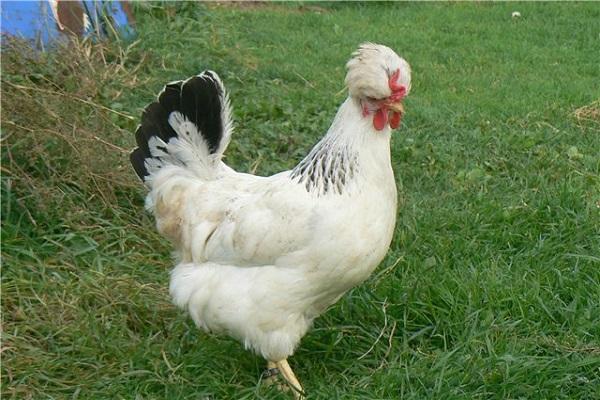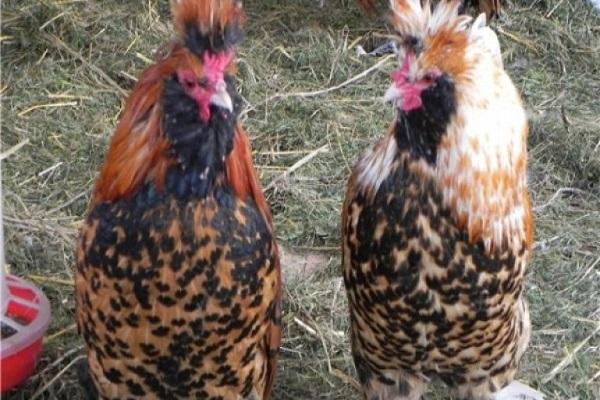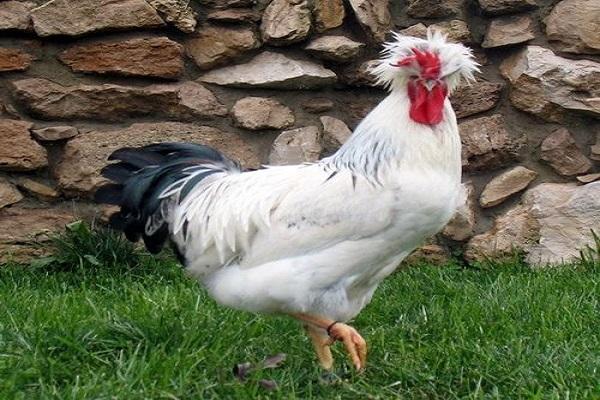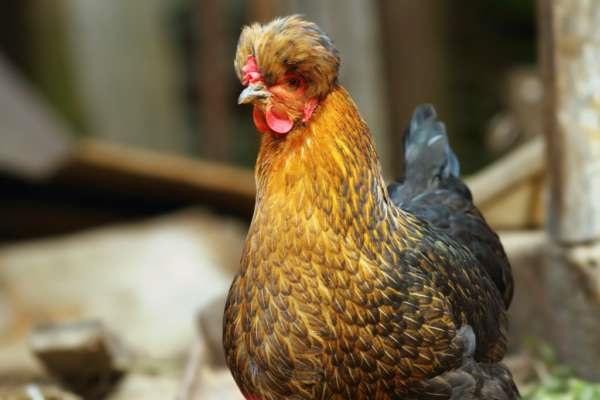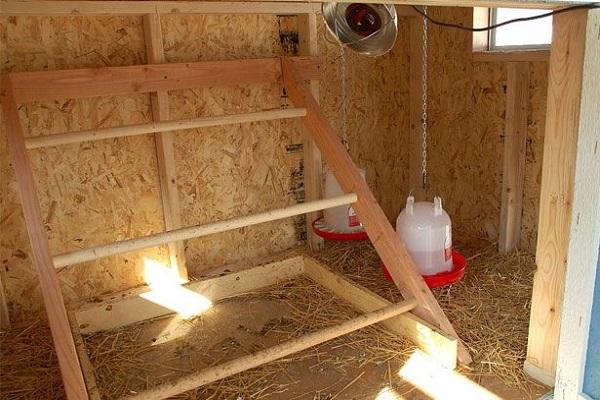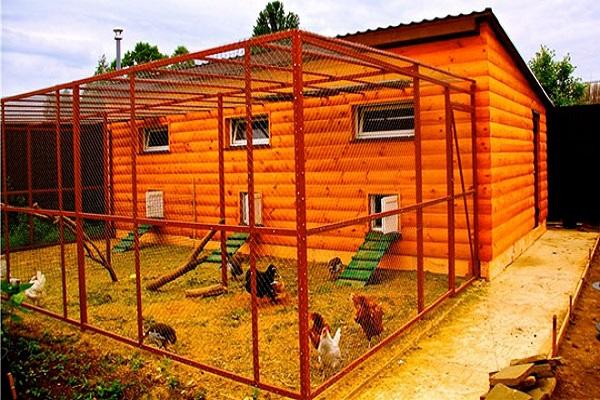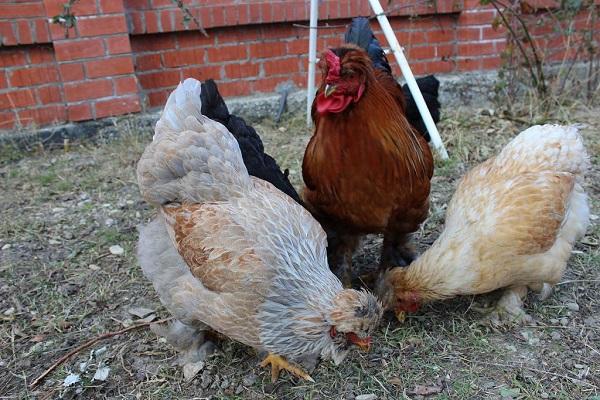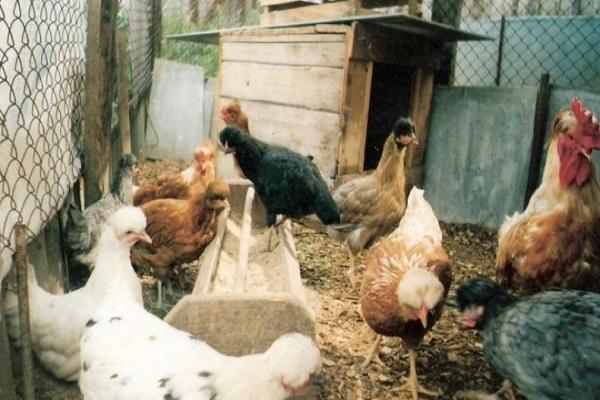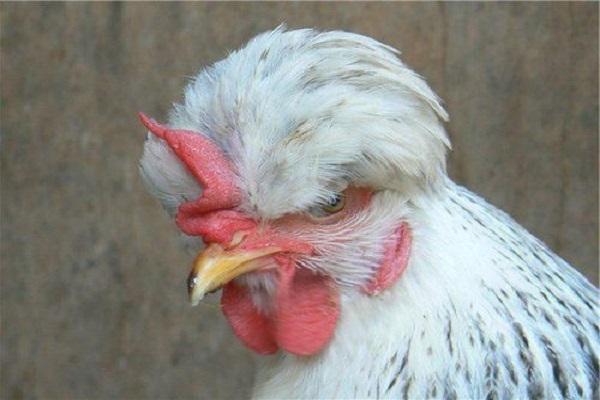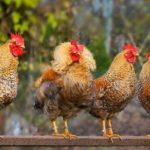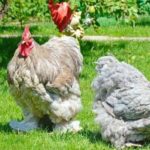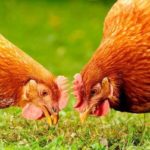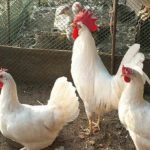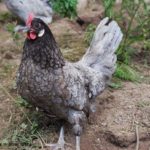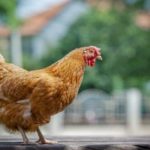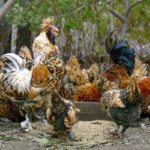The Russian Crested chicken breed is distinguished not only by its temperament, but also by its appearance. Proper care increases egg production and reduces the risk of disease. For proper breeding, it is important to follow the rules for keeping birds and their diet.
- History of the origin of the Russian Crested Chicken
- Description and characteristics
- Exterior
- Chicken Temperament
- Productivity
- Chicken and rooster weight
- Egg production
- Egg mass
- Advantages and disadvantages
- Features of maintenance and care
- Perches
- Chicken coop
- Microclimate
- Diet
- For chickens
- For adult birds
- Breeding the breed at home
- Breeding chicks by a hen
- Incubation
- Diseases and their prevention
- Conclusion
History of the origin of the Russian Crested Chicken
This breed was first noticed in the 19th century. The breed was developed specifically for breeding in the regions. Russia is considered the birthplace of the bird. However, there is evidence that similar chickens were previously seen in Asia. This breed, unlike conventional laying hens, is resistant to diseases. Another advantage is that it can withstand frost without harming your health. Birds independently hatch chicks, which have strong immunity.
Description and characteristics
Chickens have external differences that set them apart from other breeds. Among the distinctive features it should be noted.
Exterior
A distinctive feature is the exterior. Externally, a kind of feather cap is formed on the chicken’s head. More often this hat is called a crest. This cap is observed not only in laying hens, but also in males. Laying hens have a more developed and fluffy crest, while roosters have a poorly developed crest, but it increases in the area of the back of the head. The color of the cap can vary depending on the main color of the bird.
Chicken Temperament
Birds are distinguished by their flexible nature. Not aggressive towards other bird species. The chicken quickly makes contact with the person. Birds quickly get used to humans and can remember their owner.
Productivity
The breed of chickens is not distinguished by high productivity indicators and has average egg production. When raising birds for meat, there are also no significant excesses of the norm.
Chicken and rooster weight
On average, a rooster weighs 4 kg, a chicken 2.5 kg. In order for birds to have high egg production, it is necessary to feed them properly and introduce all the necessary nutritional minerals and components into the diet.
Egg production
On average, one healthy chicken can produce up to 150 eggs.The shell on eggs is white and durable. The size of the egg is greatly influenced by the age of the hen. Young chickens lay small eggs. A chicken begins to lay eggs at the age of 5 months. After laying hens reach the age of 2 years, egg production gradually decreases. The eggs become small.
Egg mass
The average weight of an egg is 60 grams. They can be large, but these are rare cases.
Important. The eggs may be light beige in color. Laying hens often become brood hens and breed without reducing the basic characteristics of the breed.
Advantages and disadvantages
The chicken breed has many advantages. These positive aspects are taken into account by poultry farmers and used for mass use.
Advantages of the Russian Crested laying hen breed:
- unpretentious to care and type of food;
- birds are distinguished by a calm disposition and goodwill towards people;
- do not require a separate poultry house, can be raised with other breeds;
- lay eggs with good taste;
- the appearance of the hens, which is decorative;
- poultry meat is juicy and soft;
- brood hens easily reproduce at home without preparing eggs.
Flaws:
- the need to regularly trim the crest, which can reduce vision;
- The egg-laying period is short; with age, the hen produces fewer and fewer eggs.
The lifespan of a bird is 5 years, after which an adult must be removed from the common chicken coop.
Features of maintenance and care
In order to extend the life of laying hens and increase egg production, it is important to follow proper care. Observance of the peculiarities of keeping birds in the poultry house is also of great importance.
Perches
For perches, wooden beams are used, which are placed at a short distance from the floor.The bird should fit comfortably on the perches.
In the area where the perches are located, the floor covering should have a special grid so that feces do not linger in the chicken coop.
Chicken coop
The presence of comfortable conditions in the chicken coop is the key to the health of the birds. The following requirements for the poultry house are highlighted:
- The poultry house is being built in a dry place, protected from drafts.
- In spring, groundwater rises are often observed. Birds do not tolerate dampness and moisture well, so the chicken coop should be built on a hill.
- The chicken coop should be made of concrete or other durable material.
- The chicken coop must have a floor and nests. Nests should be filled with fresh hay and placed in an accessible place. One nest should accommodate up to 3 hens.
- The chicken coop must have ventilation and a window.
- It is important that there is light in the room; special lamps are used for this.
- The bedding in the chicken coop is changed every week.
The chicken coop for laying hens should be large and not crowd out the birds.
Important. The poultry house must have a foundation that protects the birds from pests and retains the necessary heat. It is recommended to make the flooring from wood so as not to harm the chickens’ paws.
Microclimate
To maintain the necessary microclimate, it is important to regularly monitor humidity. Straw or peat is used as bedding. Special fiber is also used. The advantage of fiber is absorption and odor absorption. This fiber is easy to clean. For additional heat and light, infrared lamps are used, which must be turned on at night.
Diet
The diet of adults and young animals has some distinctive features that must be observed.
For chickens
To strengthen the bones of chickens in the first days, it is necessary to use low-fat cottage cheese for feeding. After hatching, boiled eggs and greens should be introduced into the diet. This is necessary for saturation with beneficial vitamins and minerals.
For adult birds
The diet of adult birds should consist of whole grain food, which contains all the necessary components. You should also include cottage cheese and greens in your diet. It is recommended to mix grain feed with fish oil, which saturates the animal with additional minerals. Special feed can be used that contains all minerals and vitamins.
Breeding the breed at home
Chickens hatch chicks at home. Such offspring are distinguished by strong immunity and adaptation to the environment.
Breeding chicks by a hen
Birds sit in nests to breed. In spring the air warms up and the chicks do not need additional lamps. The hen incubates the eggs on the nest for 21 days. After the chicks hatch, the chicks should be kept in a warm room for 3 days, after which they can be released for a walk with the chicken.
During the period of hatching chicks, it is necessary to introduce useful minerals and vitamins into the diet. This will reduce the risk of dehydration and weak chicken.
Incubation
When using incubators in the spring, selected eggs that have been tested are laid. Eggs are laid in early spring. After 21 days, the chicks appear. During the hatching period, it is important to maintain temperature conditions. After hatching, the chicks spend 24 hours under special lamps, which not only disinfect, but also provide a sufficient amount of heat.
Important.After hatching, the chicks are vaccinated. Such actions reduce the risk of disease and develop immunity..
Diseases and their prevention
The advantage of chickens is the degree of exposure to viral and infectious diseases. However, if sanitary methods for caring for chickens are not followed, diseases can appear that affect the entire chicken coop.
The most common diseases that may occur are:
- Diarrhea.
- Pasteurellosis is an infectious disease that affects the entire poultry house in a short time. The disease cannot be cured. Birds infected with the infection die quickly.
- Lack of vitamins - manifested by lack of appetite and loss of feathers. To combat the problem, regular vitamin supplements should be taken to replenish the lack of nutrients.
- Coccidiosis is a bacterial disease that most often affects young animals. The bacteria enters the bird's body with food or water. Once infected, the bird becomes weak and quickly dies. When infected with these diseases, chickens lose their immunity and may be susceptible to other types of diseases.
In order to prevent Russian Ukrainians from being exposed to diseases, it is necessary to follow the rules of prevention. First of all, regularly clean the chicken coop, clean the feeders and drinkers. Perches should be treated with a special antiseptic twice a year to prevent the appearance of fleas and other parasites. The chicken's diet should contain all the necessary nutrients to strengthen the immune system.
Conclusion
Growing Russian Crested allows you to have an ornamental bird at home, which is distinguished by its appearance and strong immunity. Such birds are capable of breeding a healthy generation that adapts to new living conditions in a short time.Birds are rarely exposed to disease and do not require special care and nutrition. It is enough to follow standard care measures and keep the chicken coop clean.

